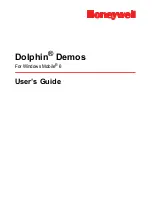
■
You can specify the following options:
■
packetCount
—Number of packets to send to the destination IPv6 address.
If you specify a zero (0), echo requests packets are sent indefinitely.
■
data-pattern
—Sets the type of bits contained in the packet to all ones, all
zeros, a random mixture of ones and zeros, or a specific hexadecimal data
pattern that can range from 0x0–0xFFFFFFFF. The default is all zeros.
■
data-size
—Sets the number of bytes comprising the IPv6 packet and reflected
in the IPv6 header in the range 0–64000; the default is 100 bytes
■
extended
header attributes—Set the interface type and specifier of a
destination address on the router that is connected for external loopback by
means of a cable or plug that loops Tx to Rx. The command succeeds only
if the specified interface is connected for external loopback and the
encapsulation type is ATM, Frame Relay, HDLC, or PPP. The command does
not work for Ethernet or VLAN encapsulations.
■
sweep-interval
—Specifies the change in the size of subsequent ping packets
while sweeping across a range of sizes. For example, you can configure the
sweep interval to sweep across the range of packets from 100 bytes to 1000
bytes in increments equal to the sweep interval. By default the router
increments packets by one byte; for example, it sends 100, 101, 102, 103,
... 1000. If the sweep interval is 5, the router sends 100, 105, 110, 115, ...
1000.
■
sweep-sizes
—Enables you to vary the sizes of the echo packets being sent.
This capability is useful for determining the minimum sizes of the MTUs
configured on the nodes along the path to the destination address. This
reduces packet fragmentation, which contributes to performance problems.
The default is not to sweep (all packets are the same size).
■
timeout
—Sets the number of seconds to wait for an ICMP echo reply packet
before the connection attempt times out
■
hop-limit
—Sets the time-to-live hop count in the range 1–255; the default
is 255
■
The following characters can appear in the display after you issue the
ping
command:
■
!—Reply received
■
.—Timed out while waiting for a reply
■
?—Unknown packet type
■
A—Admin unreachable
■
b—Packet too big
■
H—Host unreachable
■
N—Network unreachable
■
P—Port unreachable
140
■
Managing IPv6 Interfaces
JUNOSe 11.0.x IP, IPv6, and IGP Configuration Guide
Summary of Contents for IGP - CONFIGURATION GUIDE V11.1.X
Page 6: ...vi...
Page 8: ...viii JUNOSe 11 0 x IP IPv6 and IGP Configuration Guide...
Page 18: ...xviii List of Figures JUNOSe 11 0 x IP IPv6 and IGP Configuration Guide...
Page 20: ...xx List of Tables JUNOSe 11 0 x IP IPv6 and IGP Configuration Guide...
Page 26: ...2 Internet Protocol JUNOSe 11 0 x IP IPv6 and IGP Configuration Guide...
Page 228: ...204 Internet Protocol Routing JUNOSe 11 0 x IP IPv6 and IGP Configuration Guide...
Page 264: ...240 Monitoring RIP JUNOSe 11 0 x IP IPv6 and IGP Configuration Guide...
Page 438: ...414 Monitoring IS IS JUNOSe 11 0 x IP IPv6 and IGP Configuration Guide...
Page 439: ...Part 3 Index Index on page 417 Index 415...
Page 440: ...416 Index JUNOSe 11 0 x IP IPv6 and IGP Configuration Guide...
Page 454: ...430 Index JUNOSe 11 0 x IP IPv6 and IGP Configuration Guide...
















































